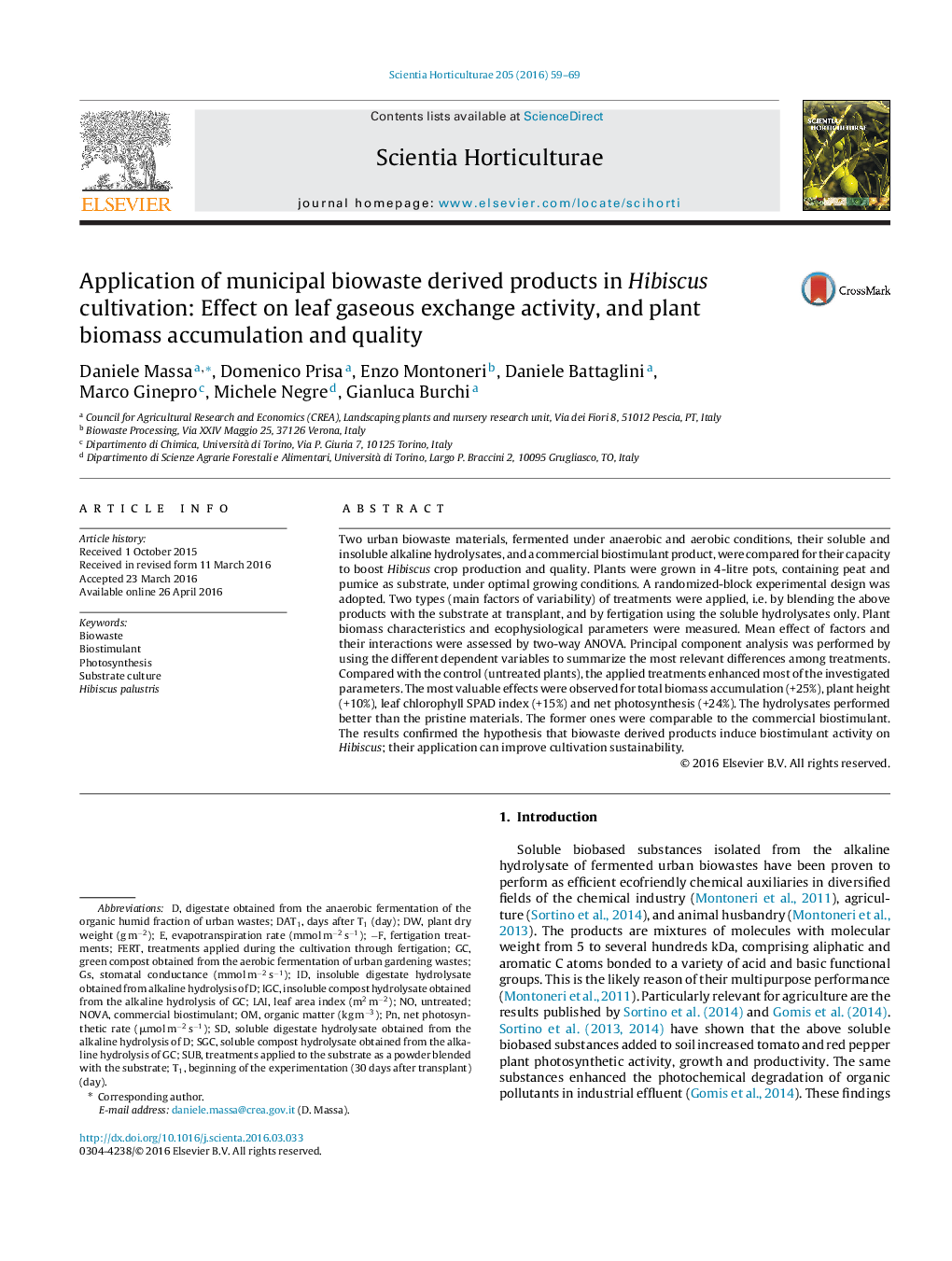| Article ID | Journal | Published Year | Pages | File Type |
|---|---|---|---|---|
| 4566037 | Scientia Horticulturae | 2016 | 11 Pages |
•Fermented organic materials and their hydrolysates were tested on substrate-grown Hibiscus.•Positive effects were observed on total biomass, plant height, SPAD index and net photosynthesis compared with untreated plants.•Tested products performed at the same level of a commercial product.•Obtained results represent a step forward for the application of biowaste hydrolysates in intensive substrate cultures.
Two urban biowaste materials, fermented under anaerobic and aerobic conditions, their soluble and insoluble alkaline hydrolysates, and a commercial biostimulant product, were compared for their capacity to boost Hibiscus crop production and quality. Plants were grown in 4‐litre pots, containing peat and pumice as substrate, under optimal growing conditions. A randomized-block experimental design was adopted. Two types (main factors of variability) of treatments were applied, i.e. by blending the above products with the substrate at transplant, and by fertigation using the soluble hydrolysates only. Plant biomass characteristics and ecophysiological parameters were measured. Mean effect of factors and their interactions were assessed by two‐way ANOVA. Principal component analysis was performed by using the different dependent variables to summarize the most relevant differences among treatments. Compared with the control (untreated plants), the applied treatments enhanced most of the investigated parameters. The most valuable effects were observed for total biomass accumulation (+25%), plant height (+10%), leaf chlorophyll SPAD index (+15%) and net photosynthesis (+24%). The hydrolysates performed better than the pristine materials. The former ones were comparable to the commercial biostimulant. The results confirmed the hypothesis that biowaste derived products induce biostimulant activity on Hibiscus; their application can improve cultivation sustainability.
